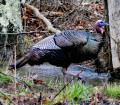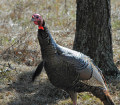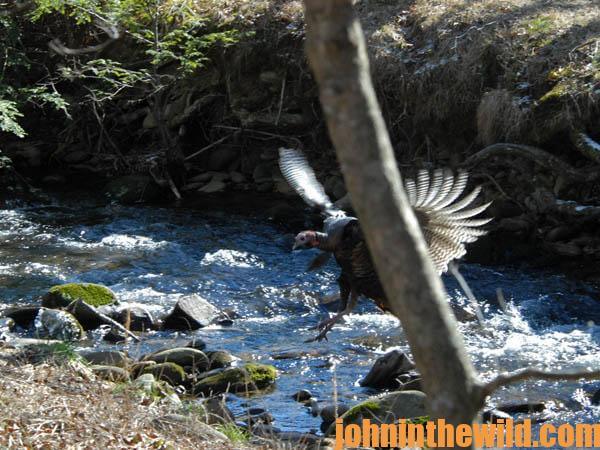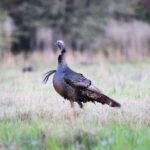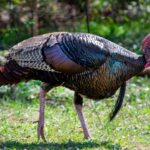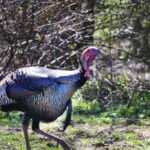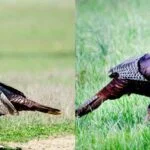John’s Note: By eliminating mistakes, understanding the wood wizard’s habits and characteristics, and knowing how to set up on turkeys, we can all add to our chances of taking the wild turkey gobbler. Good positioning is a key factor for a successful turkey hunt, yet many hunters make five-common mistakes when setting-up. Here’s how to avoid those errors that the late Buck Burns of Tuscaloosa, Alabama, one of the most-avid turkey hunters I ever knew, told me hunters often make.
3)“Why risk losing your family, your job, your sleep and your sanity to hunt turkeys, and at the moment of truth blow the whole hunt by shooting at a gobbler too far away to kill?,” Burns asked. “
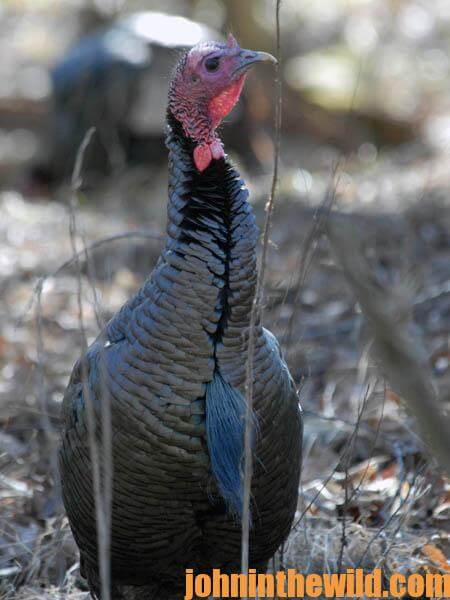 When you set-up to kill a turkey you should know how close the turkey must be before shooting. Some hunters pace-off the distance, while others decide they won’t shoot until the turkey passes a particular tree. More often than not, the hunter must set-up two or three times to call a turkey. Successfully changing calling locations is tricky, but the most-important concern is to know when to move and when to sit still. Often the hesitant gobbler is spooked by the impatient hunter. Stick with whatever system you use. Often a turkey will have walked into killing range, if only the hunter had waited longer. In spring, an old gobbler will look 6-feet tall. Even when he’s 75- to 80-yards away, he looks as though he’s about to step on you. But holding your shot until you are sure of a kill will mean the difference between having a gobbler for supper or a disappointing hunt. A long shot for me is 40 yards with a 12 gauge, 3-inch Magnum. I prefer to shoot turkeys at 30 yards or less.
When you set-up to kill a turkey you should know how close the turkey must be before shooting. Some hunters pace-off the distance, while others decide they won’t shoot until the turkey passes a particular tree. More often than not, the hunter must set-up two or three times to call a turkey. Successfully changing calling locations is tricky, but the most-important concern is to know when to move and when to sit still. Often the hesitant gobbler is spooked by the impatient hunter. Stick with whatever system you use. Often a turkey will have walked into killing range, if only the hunter had waited longer. In spring, an old gobbler will look 6-feet tall. Even when he’s 75- to 80-yards away, he looks as though he’s about to step on you. But holding your shot until you are sure of a kill will mean the difference between having a gobbler for supper or a disappointing hunt. A long shot for me is 40 yards with a 12 gauge, 3-inch Magnum. I prefer to shoot turkeys at 30 yards or less.
4) “I know of hunters who do everything right but still haven’t bagged a bird. They set-up where the turkey wants to go, they call correctly, and they are well-hidden. Their downfall is impatience and a lack of knowledge about turkeys, because often these men will stand-up just as the turkey is within range. Often novice hunters don’t know how a gobbler works. A turkey may come at you gobbling with every breath, but this is the exception rather than the rule.
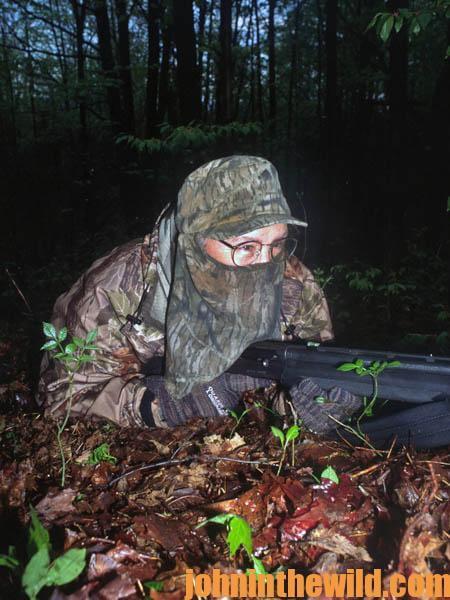 Most often he will gobble first from the roost, then fly-down and gobble, so the hen comes to him. When this fails, he will hush and quietly walk to her. The woodsman defeats himself at this point by thinking, ‘The turkey’s spooked and left,’ ‘I’ll bet he’s with a bunch of hens,’ or ‘I’ve sat here long enough. If he was coming he’d be here by now.’ All these thoughts have destroyed many a good turkey hunt. I prepare to take the tom when he stops gobbling. Quiet woods usually mean the bird is on the way.
Most often he will gobble first from the roost, then fly-down and gobble, so the hen comes to him. When this fails, he will hush and quietly walk to her. The woodsman defeats himself at this point by thinking, ‘The turkey’s spooked and left,’ ‘I’ll bet he’s with a bunch of hens,’ or ‘I’ve sat here long enough. If he was coming he’d be here by now.’ All these thoughts have destroyed many a good turkey hunt. I prepare to take the tom when he stops gobbling. Quiet woods usually mean the bird is on the way.
5) “There are times when moving is an excellent tactic, but knowing when and why to move is the difference between a seasoned hunter and a beginner. Water may be between you and the turkey that hasn’t been there before. Too, you may be in a place where your turkey has fought and been defeated by another gobbler. Often the ole bird has a favorite spot where he meets his hens, and that’s as far as he will go to find one. These are just a few of the reasons that a turkey hangs-up. When a bird does hang-up, move, and set up-in another location. Usually a turkey will walk to a certain point, but then move back. Maybe he’ll come back to his stopping point again and retreat once more. When this happens, I try to keep him gobbling, so when he’s a good distance away from me, I can move-up on him undetected. I never move, unless I know exactly where my turkey is. Often I’ll leave and hunt him from a different spot the next day, rather than risk spooking him.”
John E. Phillips Kindle book “Turkey Hunting Tactics,” “Click here to get this book.”
About the Author
John Phillips, winner of the 2012 Homer Circle Fishing Award for outstanding fishing writer by the American Sportfishing Association (AMA) and the Professional Outdoor Media Association (POMA), the 2008 Crossbow Communicator of the year and the 2007 Legendary Communicator chosen for induction into the National Fresh Water Hall of Fame, is a freelance writer (over 6,000 magazine articles for about 100 magazines and several thousand newspaper columns published), magazine editor, photographer for print media as well as industry catalogues (over 25,000 photos published), lecturer, outdoor consultant, marketing consultant, book author and daily internet content provider with an overview of the outdoors.

